Heathen Divinities
Handmade playing cards from the British Museum depicting classical Greek and Roman gods and goddesses.
Following archaeological discoveries and new literary works, the Romantic era saw a resurgence of fascination with ancient myths, folklore, and pre-Christian religions. The 12 full-length court cards from this 52-card pack in the British Museum, produced by an anonymous artist, are an early 19th century depiction of classical Greek and Roman divinities. The kings are wearing crowns and classical robes and the four queens are their consorts or wives. The four jacks are other related gods. The ace of spades shows an assembly of the 12 deities encircling the suit mark.
The term "heathen divinities" therefore refers to gods and goddesses worshipped in pagan or pre-Christian religions. In this pack we see a variety of Greek & Roman deities including Pan, Venus, Vulcan, Mercury, Prosperine, Pluto, Momus, Amphitrite, Neptune, Bacchus, Juno and Jupiter. The captions beneath the images attempt to summarize the relationships between the deities which may have inspired the artist's imgination.
The numeral cards are also hand painted but undecorated, just plain pips. The card backs are also plain.
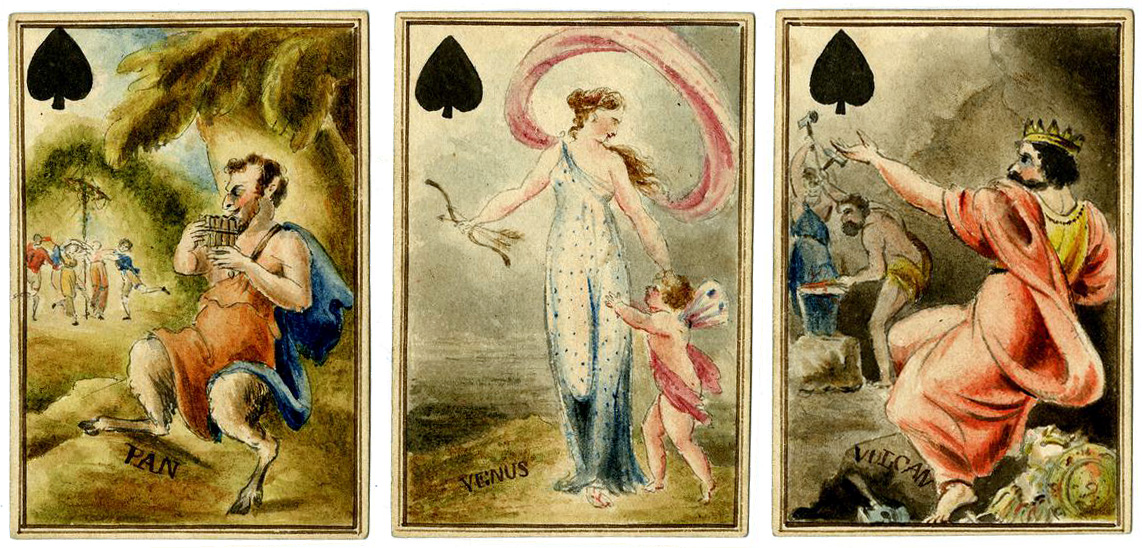
Above: Pan was the Greek god of shepherds, also representing untamed, rustic passion and desire. Here we see him playing pan pipes in the wilds of nature. • Venus is the goddess of love and beauty, equivalent to the Greek Aphrodite. She was the consort of Vulcan, the Roman and Greek god of fire. A forge and metal workers can be seen in the background. These three deities are connected through themes of love, desire, and beauty, though in different contexts.

Above: the Roman god Mercury, fleet-footed messenger of the gods, wears winged shoes and a winged hat, and carries a caduceus • Prosperine (or Persephone) was the daughter of Ceres. She was abducted by Pluto, king of the underworld, during which time the earth experienced a period of darkness. The dogs may be symbolically linked to the underworld. There also appears to be an image of Sisyphus in the background. Pluto also presides over the afterlife and various scenes in the background may allude to this. All three are connected through the mythological framework of the underworld: Mercury's role as a guide and mediator, Proserpine's position as the queen of the underworld, and Pluto's dominion over the dead.
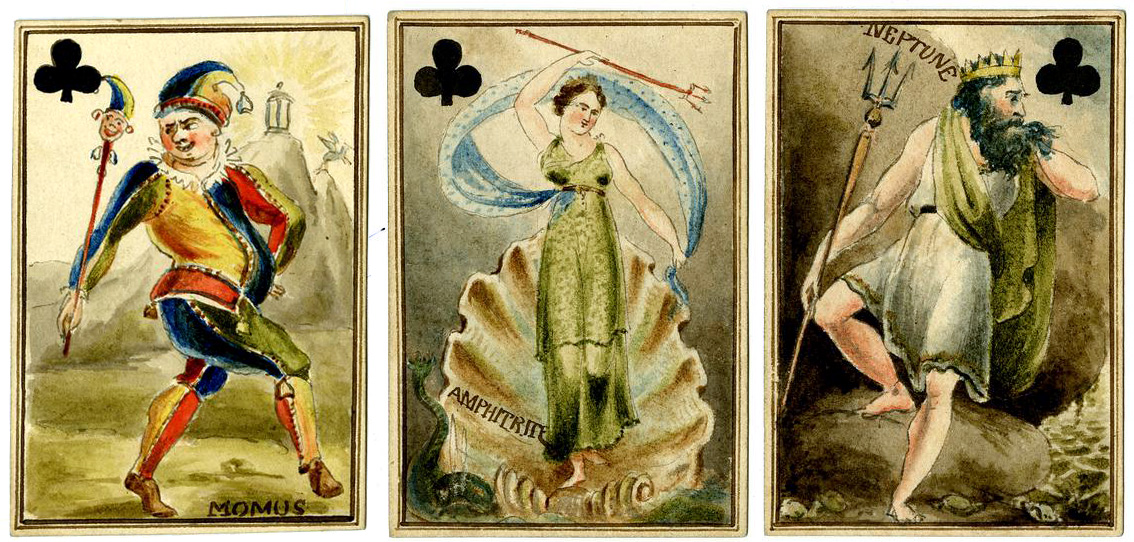
Above: Momus, the god of satire, mockery and poetry in Greek mythology, was also a figure of harmless fun, a harlequin. He became the Fool in Minchiate packs • Amphitrite in Greek mythology was the goddess of the seas and wife of Poseidon, who was identified as Neptune, god of the sea in the Roman pantheon. Neptune and Amphitrite are therefore closely linked through their marriage and shared dominion over the sea, while Momus has a more general role.
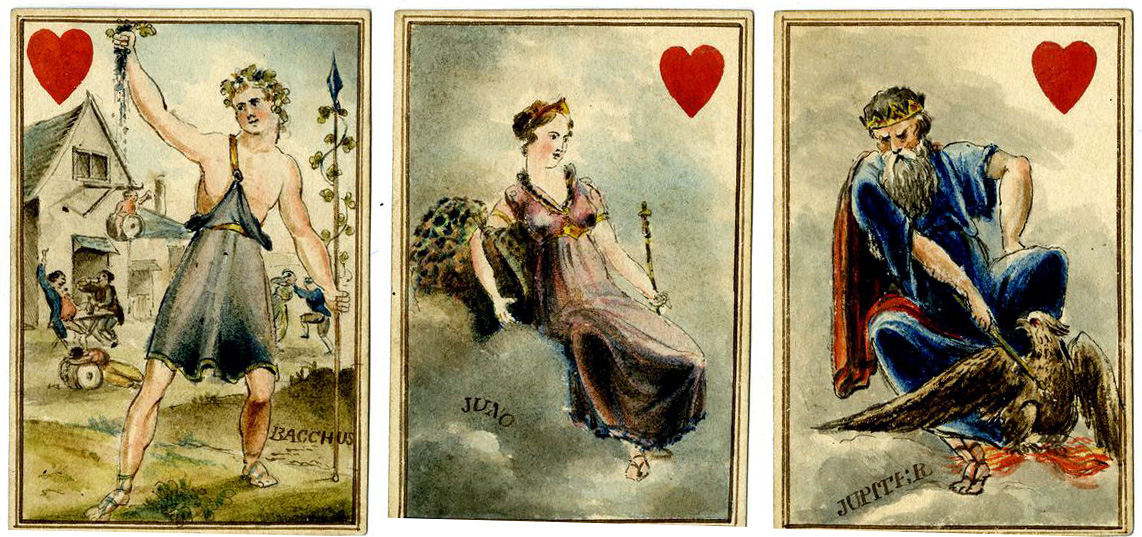
Above: Bacchus was the god of wine and revelry in Roman mythology, and we can see this going on in the background scene • Juno was the wife and sister of Jupiter, the chief Roman god of the sky and of thunder. His sacred animal was the eagle which became a common symbol of the Roman army. Jupiter, Juno and Bacchus have interconnected stories that highlight themes of jealousy, protection, and divine power. Jupiter, as Bacchus's father, protects and nurtures him, while Juno, driven by jealousy, attempts to undermine him • The cards were produced using watercolours with pen and ink, 62x93 mms, backs plain. © The Trustees of the British Museum • Number 1896,0501.941►
References
British Museum Number 1896,0501.941►
O’Donoghue, Freeman M: Catalogue of the collection of playing cards bequeathed by Lady Charlotte Schreiber (English 39), Trustees of the British Museum, London, 1901 [digital version here]
By Simon Wintle
Spain • Member since February 01, 1996 • Contact
I am the founder of The World of Playing Cards (est. 1996), a website dedicated to the history, artistry and cultural significance of playing cards and tarot. Over the years I have researched various areas of the subject, acquired and traded collections and contributed as a committee member of the IPCS and graphics editor of The Playing-Card journal. Having lived in Chile, England, Wales, and now Spain, these experiences have shaped my work and passion for playing cards. Amongst my achievements is producing a limited-edition replica of a 17th-century English pack using woodblocks and stencils—a labour of love. Today, the World of Playing Cards is a global collaborative project, with my son Adam serving as the technical driving force behind its development. His innovative efforts have helped shape the site into the thriving hub it is today. You are warmly invited to become a contributor and share your enthusiasm.

Leave a Reply
Your Name
Just nowRelated Articles
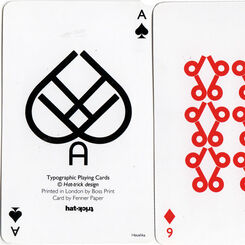
Typographic Playing Cards
Typographic Playing Cards designed by Jim Sutherland, c.2010.

Hand-drawn set of 52 playing cards
An imaginatively hand-drawn set of 52 playing cards by an amateur artist, 18th century.
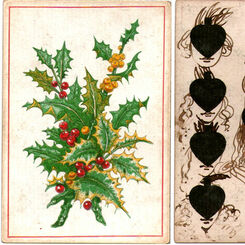
Transformation Cards for Christmas
Hand-drawn Transformation cards, c.1870.

Pantheon or Heathen Mythology
Pantheon or Heathen Mythology cards for instruction of youth, c.1770.
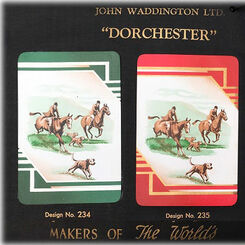
Waddington’s 1940 Trade Brochure
Waddington’s 1940 Trade Brochure.

Goodall’s “Historic” Playing Cards
Goodall’s “Historic” Playing Cards depict royal costumes of four periods in English history, 1893.

Hand-Painted Transformation, c.1800-20
An early 19th century set of hand-painted transformation playing cards depicting contemporary scenes...

Monsters
A collective of artists known as Monster Illustration produced a deck entitled “Monsters” in 2004.
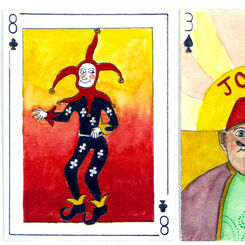
Jest Jokers
Peter Wood’s “Jest Jokers” comprising 54 different Joker designs made into a full pack of cards.
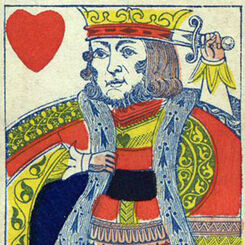
Suicide King
The King of Hearts, holding a sword behind his head, is sometimes nicknamed the “Suicide King”. He c...
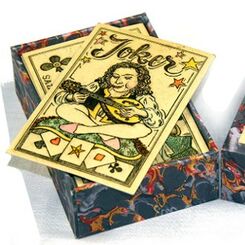
Karl Gerich
Karl Gerich's interest in playing-card production came to the fore while studying at Bath Academy of...

Jean Picart le Doux
Jean Picart le Doux playing cards, issued in 1957 to celebrate the company's 125th anniversary, feat...

About Peter Wood
Peter Wood is a UK based artist.

Hidden Mickeys
HiddenMickeys

About Shelley Fowles
Shelley Fowles was born in South Africa but has lived in the United Kingdom since 1979. She trained ...
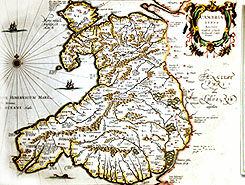
The Llewellyn Tarot - Welsh tarot cards
The Llewellyn Tarot - Welsh tarot cards

Romanian playing cards by Alf Cooke
Romanian playing cards, manufactured and exported by the Universal Playing Card Co., Leeds, in the 1...

Danbrit
Danbrit playing cards by Alf Cooke, 1930s
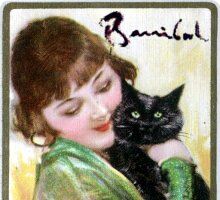
Barribal Series
William H. Barribal (1873 - 1956) was a London artist who created the Waddingtons 'Barribal' playing...

2000Pips Transformation Pack
2000Pips Transformation Pack
Most Popular
Our top articles from the past 60 days



 Your comment here. Your comment here. Your comment here. Your comment here. Your comment here. Your comment here. Your comment here. Your comment here. Your comment here. Your comment here. Your comment here. Your comment here. Your comment here. Your comment here. Your comment here. Your comment here. Your comment here. Your comment here. Your comment here. Your comment here. Your comment here. Your comment here. Your comment here. Your comment here. Your comment here. Your comment here. Your comment here. Your comment here. Your comment here. Your comment here. Your comment here. Your comment here.
Your comment here. Your comment here. Your comment here. Your comment here. Your comment here. Your comment here. Your comment here. Your comment here. Your comment here. Your comment here. Your comment here. Your comment here. Your comment here. Your comment here. Your comment here. Your comment here. Your comment here. Your comment here. Your comment here. Your comment here. Your comment here. Your comment here. Your comment here. Your comment here. Your comment here. Your comment here. Your comment here. Your comment here. Your comment here. Your comment here. Your comment here. Your comment here.




















